These Low-Cost Solar Roofs Can Be Used in Your Homes & In E-Carts For Vendors!
Donated to street vendors by the #Hyderabad company , each of these sustainable e-carts can power a light bulb, a fan and also charge a mobile phone! #Innovation #RenewableEnergy
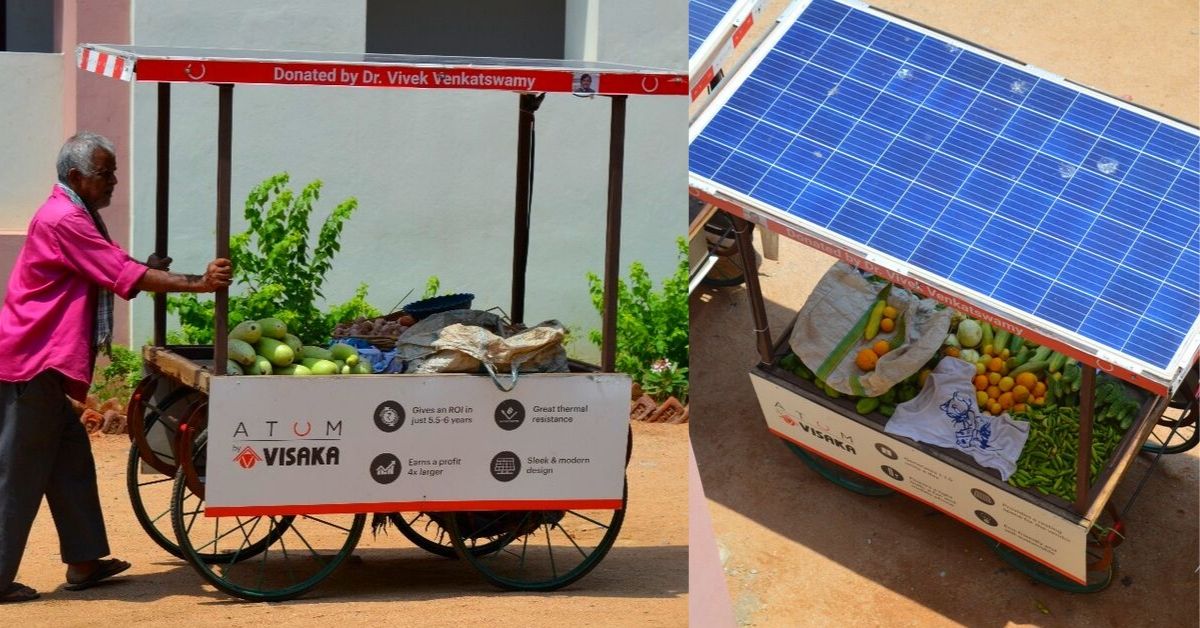
Zahara Begum, 55, is a street vendor residing in Hyderabad, who sells fried fish. Her work begins at the crack of dawn and carries on till about 11:30 pm.
“I make about Rs 400 every day, and till about two months ago, I would have to spend almost half of that amount on renting the food cart, which left me with very little money. In addition to that, the cart did not come with a roof, so when it would rain, the business would suffer, and the flimsy tarpaulin would barely provide any shelter,” she says.
Going out camping, or want to keep a lamp handy which does not run on electricity? Check out this portable salt lamp!
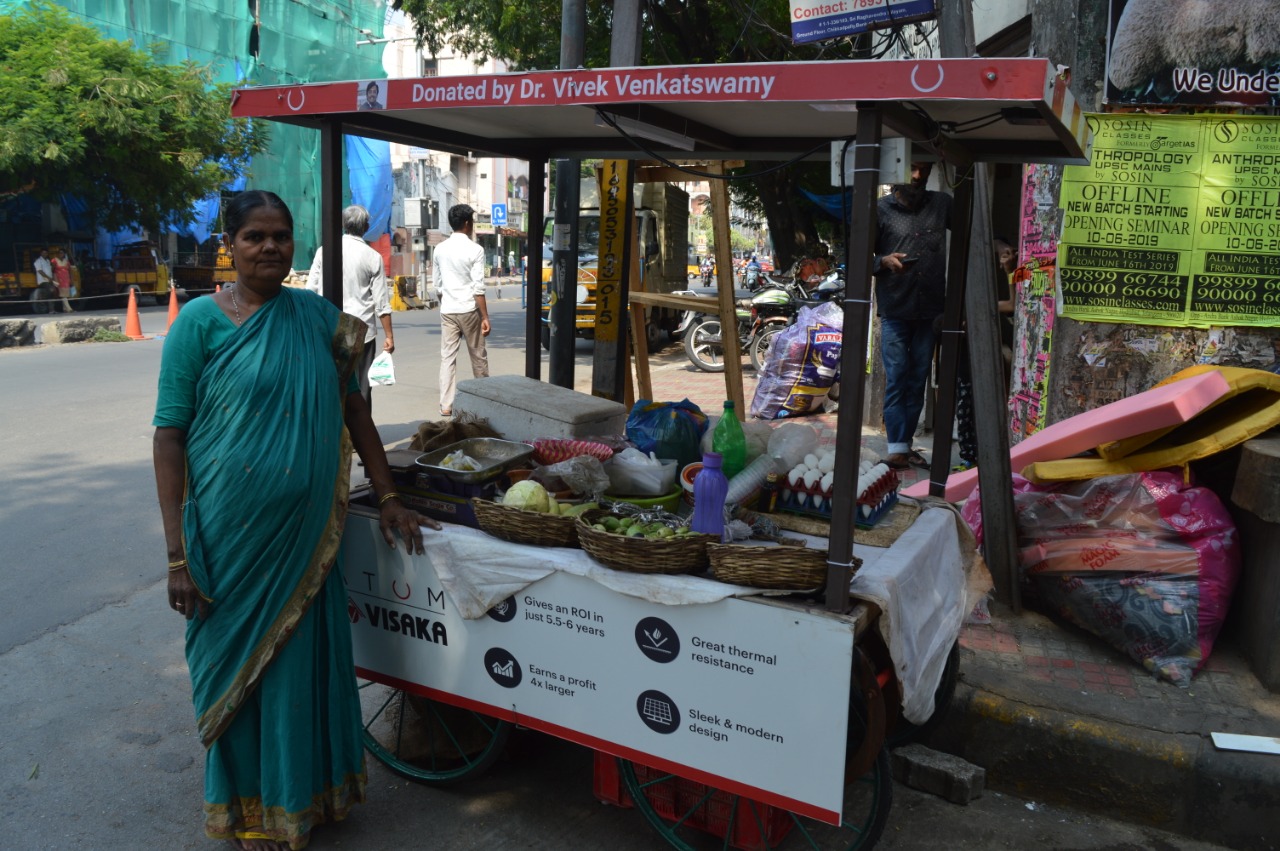
Today, Zahara is a happy woman. She has been using a solar powered e-cart that can power a light bulb, a fan and charge a mobile phone. It also comes with a solar roof which is weather-resistant.
These carts have been developed by Visaka Industries, and feature the company’s breakthrough product ATUM—an eco-friendly, energy-efficient and energy-generating solar roofing system.
The inception of ATUM
Visaka Industries was founded by Dr G Vivekanand in 1983 and was taken over by his son, G Vamsi Krishna in 2017.
“In the past ten years, the company has taken a special interest in sustainability, and have accordingly, shifted the focus in developing building materials which are recycled or are environmentally friendly,” begins 30-year-old Vamsi.
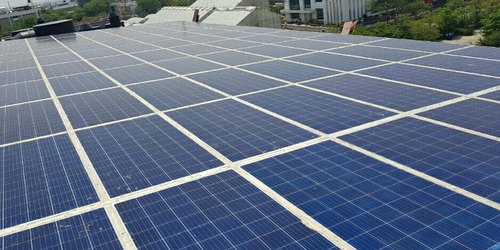
In early 2017, they developed a fibre cement board named, ‘V-Next,’ which would go on to form the base of ATUM.
“We developed this board using fly ash, cement and recycled cement bags. It is strong and can be easily substituted for plywood, gypsum boards and sand/water-based construction materials, and is already being used by several people who wish to build sustainable homes,” he says.
Then, over three years ago, they decided to come up with solar roofs. After about 2.5 years of research and development, the ATUM integrated solar rooftop was launched in December 2018.
Elaborating on ATUM and its benefits, Vamsi says, “The ATUM rooftop was made by fixing 72 solar cells on V-next. It serves all functions of a traditional roof while also regulating the temperature with high thermal conductivity. Unlike traditional solar panels, ATUM does not have to be mounted upon surfaces and can be placed right next to each other, allowing maximum utilisation of space.”
The 7ft x 3ft ATUM rooftop can generate about 320W of power. It needs to be placed like tiles depending on the dimensions of the roof of a particular home. It is sturdy, rustproof, leak-proof, can bear a load of up to 300 kgs and withstand fire for almost 2 hours and 57 minutes.

“Traditional solar roofing systems available in the market last 10 to 15 years. But, we have designed our roofs in such a manner that they last upto at least 30 years,” points out Vamsi.
There is also an ATUM app which can be easily downloaded on one’s smartphone and accessed to manage the solar power generated.
Important projects and impact
About six months ago, Vamsi visited the Dr BR Ambedkar Group of Institutions in Bagh Lingampally to deliver a guest speech.
“I found that most of the parents of these children worked as street vendors selling vegetables, fruits, cooked food, and so on. These children explained that their parents spend a considerable chunk of their income renting the cart and when it rains, or it is too hot, the working hours are slashed and this affects heir daily income,” says Vamsi.
This was the point when Vamsi had the ingenious idea of developing a product that would be sustainable and would serve useful to the vendors come rain or shine.
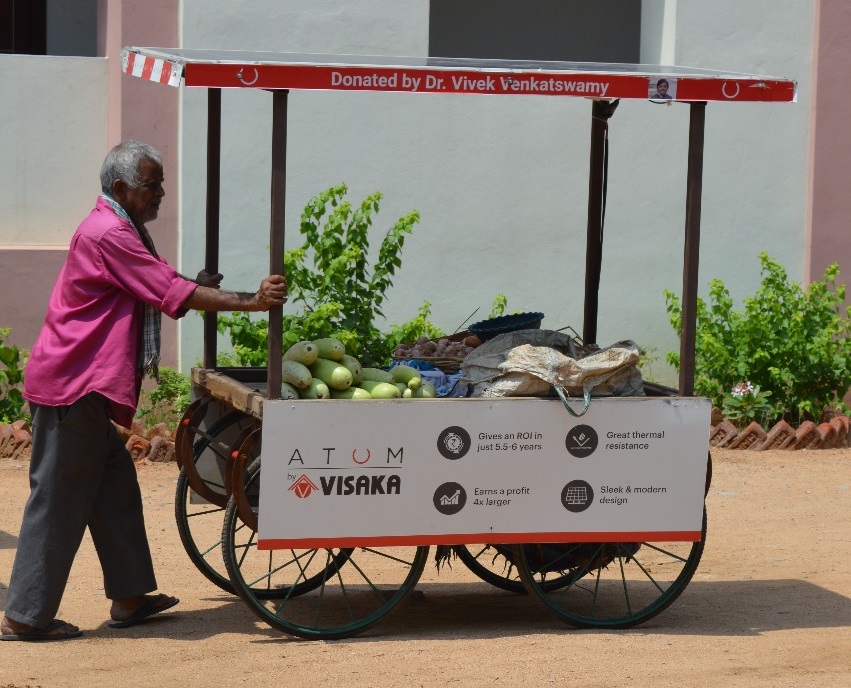
It took them about four months, but they finally came up with the ATUM powered e-cart. So far, they claim to have donated approximately 40 such e-carts to street vendors in Hyderabad and are in the process of donating 20 more.
Other than being used in the house construction sector, there are other memorable projects that Vamsi recalls. Early into the launch of ATUM, they worked with Air India where they installed ATUM in Air India SATS airport in Hyderabad. This electricity generated is used to power all the walkway ramps at the airport. ATUM was also installed on the roofs of bus and bike stations in the city.
This journey, however, has had its fair share of challenges.
“Several issues arose at various stages of prototyping, but we learnt from them, and they were ultimately resolved with technical inputs from existing solutions,” says Vamsi. He also adds that since the product is still in a nascent stage and has dual functions, explaining the value of the product and pricing it at par with other products in the market is a challenge.
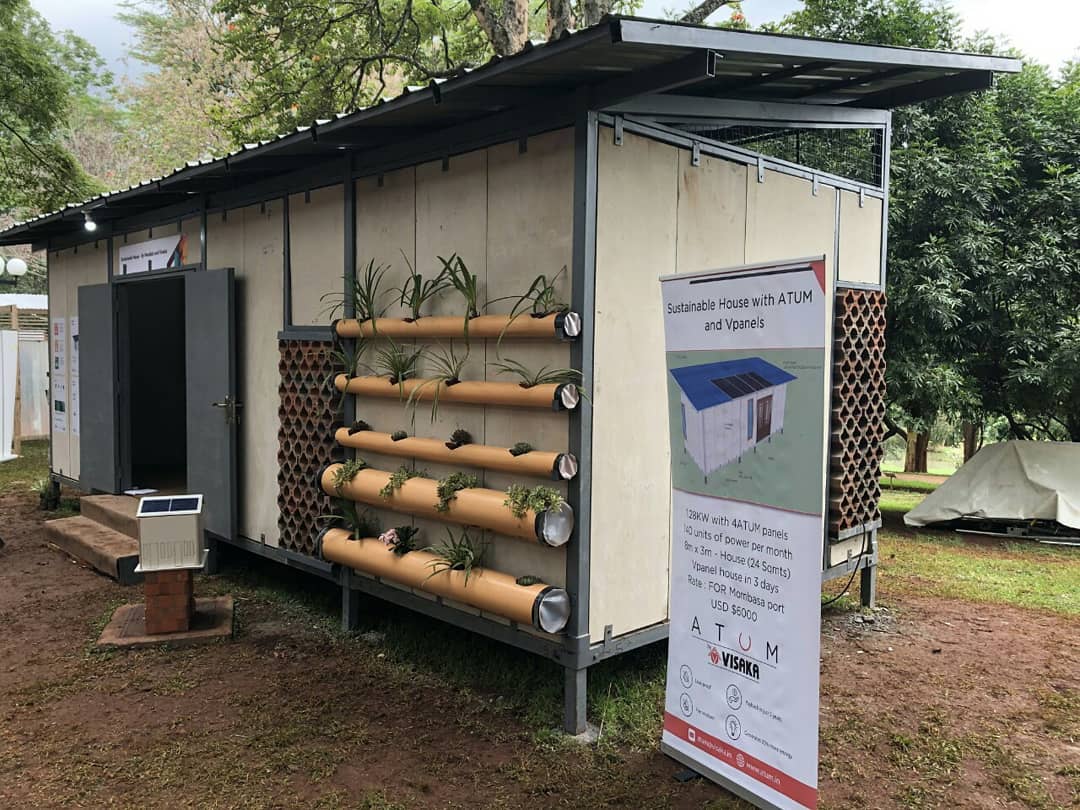
ATUM is currently operating in ten major cities in India—Delhi, Mumbai, Kolkata, Chennai, Hyderabad, Bengaluru, Ahmedabad, Pune, Kochi and Goa. Visaka’s dealer and distributor network is functional from 13 marketing offices that are spread across the country, connecting all major states and UTs in India.
“We have sold over 3,125 units in the last eight months since the launch,” he says with a proud smile.
Vamsi believes that the construction industry is transforming to suit cleaner, eco-friendly construction demands. Also, there is excellent potential in transforming unused rooftops in godowns, railways stations, factories to solar-powered roofs.
“We aim to find solutions that meet the country’s projected sustainability targets of generating 40 GW power from rooftops,” he says, signing off.
You May Also Read: Go Solar: Govt Schemes & Subsidies You Can Avail to Harvest the Sun!
(Edited by Gayatri Mishra)
Like this story? Or have something to share?
Write to us: [email protected]
Connect with us on Facebook and Twitter.
This story made me
-
97
-
121
-
89
-
167
Tell Us More
If you found our story insightful, informative, or even just enjoyable, we invite you to consider making a voluntary payment to support the work we do at The Better India. Your contribution helps us continue producing quality content that educates, inspires, and drives positive change.
Choose one of the payment options below for your contribution-
By paying for the stories you value, you directly contribute to sustaining our efforts focused on making a difference in the world. Together, let's ensure that impactful stories continue to be told and shared, enriching lives and communities alike.
Thank you for your support. Here are some frequently asked questions you might find helpful to know why you are contributing?



















